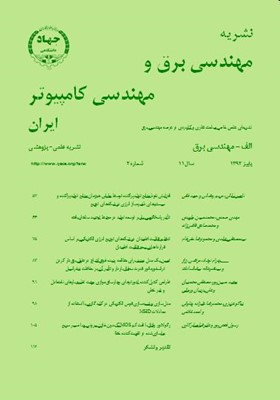تأثير پاسخگويي بار بر توسعه توليد در محيط تجديد ساختار يافته
محورهای موضوعی : مهندسی برق و کامپیوترمهدی صمدی 1 , محمدحسین جاویدی 2 , محمدصادق قاضیزاده 3
1 - دانشگاه فردوسی مشهد
2 - دانشگاه فردوسی مشهد
3 - دانشگاه صنعت آب و برق (شهيد عباسپور)
کلید واژه: بار کشسان برنامهريزي توسعه توليد پاسخگويي بار,
چکیده مقاله :
امروزه برنامههاي پاسخگويي بار مورد توجه فراوانی قرار گرفتهاند. با گسترش اين برنامهها، مشتريان ميتوانند مشابه سمت توليد، در بهرهبرداري سيستم مشارکت کنند و بر اين اساس نياز به بازبيني مدلهاي برنامهريزي سيستم قدرت احساس ميشود. در اين مقاله به مدلسازي اثرات پاسخگويي بار بر برنامهريزي توسعه توليد پرداخته شده و تأثيرات، از دو ديدگاه مشتريان و شرکتهاي توليد بررسي شده است. مدل به کار رفته در اين مقاله منطبق با ساختار غير متمرکز بازارهاي برق کنوني ميباشد. در اين راستا تأثير پاسخگويي بار، بر تصميم به سرمايهگذاري در واحدهاي توليدي جديد مورد بررسي قرار گرفته و کاهش نياز به ظرفيتهاي جديد يا تعويق آن با ارائه يک شاخص جديد ارزيابي شده است. همچنين تغييرات در هزينه سرمايهگذاري در واحدهاي توليدي جديد و نيز تغييرات هزينههاي پرداختي توسط مشتريان، در نتيجه پاسخگويي بار، تجزيه و تحليل شده است. روش پيشنهادي روي شبکه 30 باسه استاندارد IEEE آزمايش شده و نتايج به دست آمده ارائه و تحليل شدهاند.
Demand response is becoming a promising subject in operation of restructured power systems. As a result, recently more attention is paid to demand response programs. Customers can contribute in operation of power systems by deployment demand response. The growth of customers’ participation in such programs may affect planning of power systems. Therefore, it seems necessary to consider the effects of demand response in planning approaches. In this paper, the impact of demand responsiveness on decision making in generation expansion planning is modeled. Then, avoidance or deferment in installation of new generating units is comprehensively investigated and evaluated by introducing a new simple index. In addition, changes in investment cost and total cost paid by customers are investigated. The effects of demand responsiveness are studied from both the customers’ and generation companies (Gencos) points of view. The proposed model has been applied to modified IEEE 30-bus system and the results are discussed.
